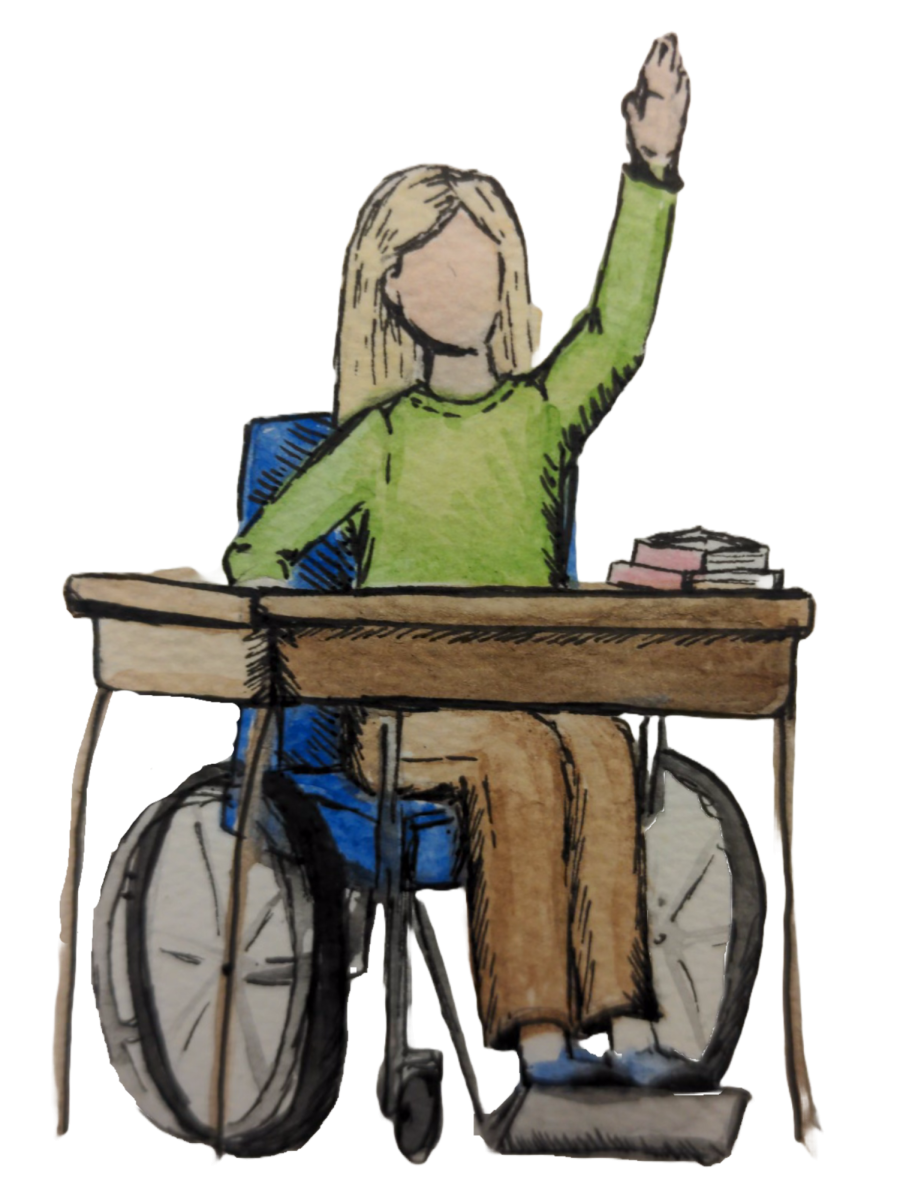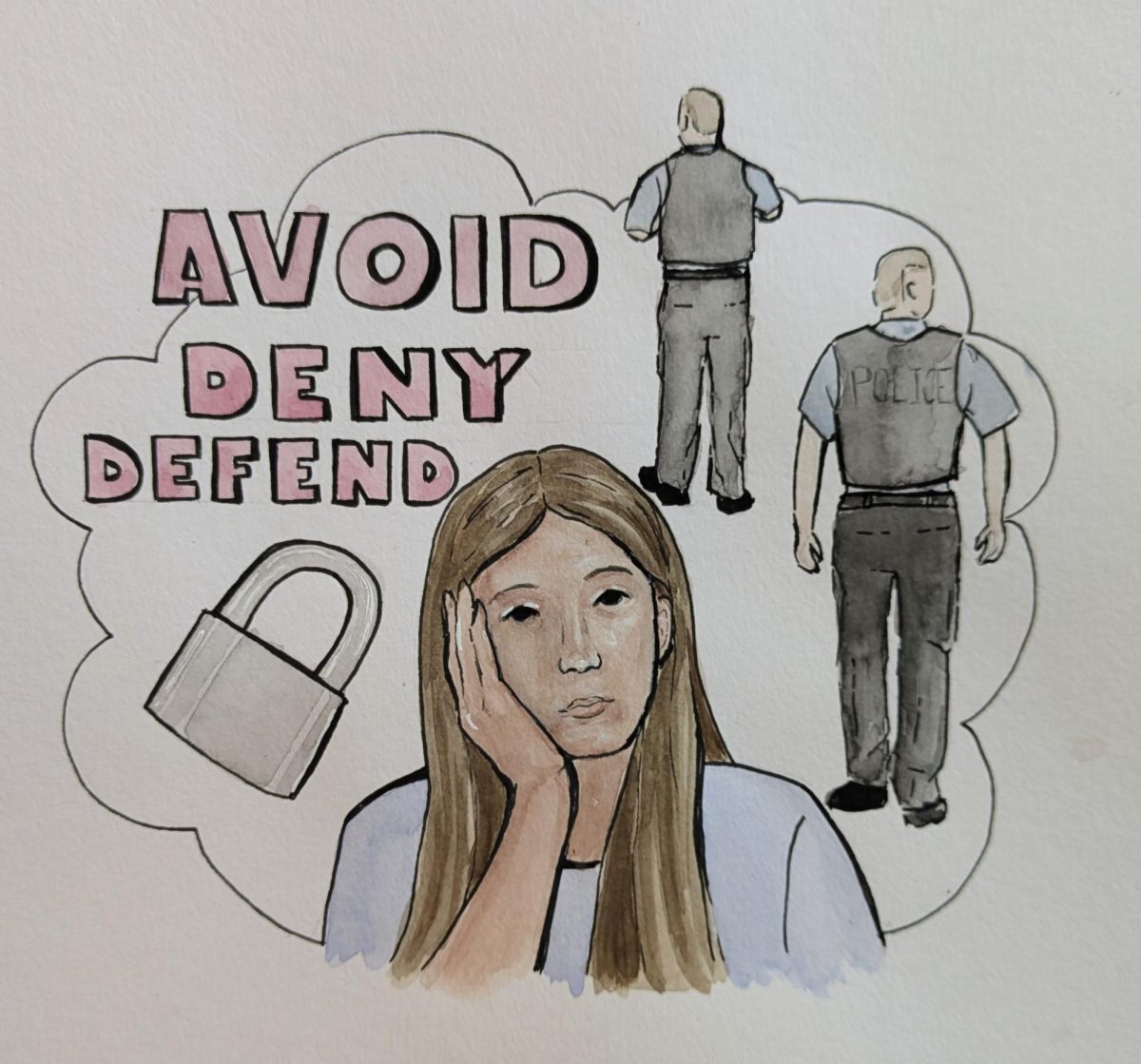This previously ran in our April 2024 issue.
Many able-bodied Americans spend their entire lives in a world made for them: stairs that suit their preferences, lighting and temperature that are designed for their comfort, and a classroom structure tailored to their preferences — all while an entire group of Americans remains underrepresented and underserved.
Everyone deserves the right to a fair, equitable, and open education. A proper primary and secondary education is instrumental in influencing our lives — and yet, the education of thousands of disabled Americans is negatively impacted by a lack of accommodations in schools across the nation. Ensuring everyone can achieve their full potential should be the goal of education, and it is something that can only be made a reality when schools prioritize one thing: accessibility.
One in six Americans are affected by some kind of disability — a number totaling to over 43 million people. Globally, 1.3 billion people experience significant disability. With such a large disabled population, it would make sense to have an extensive variety of accommodations — and yet, that is far from the case.
In a June 2020 report by the U.S. Government Accountability Office, a national survey found “about two-thirds of school districts identified barriers that may limit access for people with disabilities in a quarter or more of their school facilities.” What’s more — in schools where surveyors carried out on-site inspections, they were able to identify barriers that may limit access for people with disabilities in all 55 schools.
In the same report, the Government Accountability Office estimated that 17 percent of districts nationwide — enrolling over 16 million students — have one or more schools that are not typically attended by students with physical disabilities due to the sheer number of barriers.
For able-bodied people, it can be hard to recognize when something is inaccessible; these things are so commonplace that they can easily go unnoticed. These barriers, some of the most common being steep ramps, tight door vestibules, inoperable door handles, or playgrounds without stable ground surfaces, are so widespread that they are often ignored.
To put it plainly, allowing public buildings, like schools, to continue being inaccessible is blatant discrimination.
The Americans with Disabilities Act (ADA), initially passed in 1990, defines what discrimination through inaccessibility can look like.
Title III of the ADA states that, “Public accommodations must comply with basic nondiscrimination requirements that prohibit exclusion, segregation, and unequal treatment.” When two-thirds of schools do not meet basic accessibility requirements, and leave disabled students unequal and excluded from their able-bodied peers, it isn’t a question. Being complicit and passive towards lack of accessibility is discrimination.
When it comes to accessibility, physical disabilities aren’t the only ones that need addressing; students with mental disabilities are also consistently underserved.
According to the National Center for Education (NCES) statistics, in the 2021-22 school year, 435,000 students aged 14–21 who were served under the Individuals with Disabilities Education Act (IDEA) exited school. Of these, 75 percent graduated with a high school diploma, with another 14 percent dropping out; almost triple the rate for non-disabled students, which is 5 percent.
When there is such a disproportionate amount of students with disabilities dropping out, it is clear that a change has to be made.
Aside from physical restrictions, another key factor in accessibility is ensuring that every school has educators equipped with the skills to help disabled students. And yet, amidst already staggering teacher shortages, special education continues to be one of the most understaffed positions. According to NCES, 40 percent of schools have vacancies for special education teachers.
Through improving the quality of education, through both improving curriculum and the amount of people assisting students who need it, we can level the playing field, and give disabled students the same opportunities as their able-bodied peers.
In many ways, Emmaus High School is fortunate when it comes to accessibility. Our students have access to elevators and ramps; they have the right to Individual Education Plans (IEPs) that help students receive personalized assistance; and they have immediate proximity to many teachers who are willing to make accommodations.
This is just a starting point, though; even if a school is equipped with all of these things, accessibility goes deeper. It’s not just about filling in boxes on a checklist — it’s about constantly improving. It’s about learning the specific needs of students as individuals. It’s about giving everyone the resources that they need to be successful.
Accessibility is about more than adding a few features here and there to pre-existing buildings; it’s about giving people the resources they need to be successful, both in education, and in the world as a whole.
Both at EHS and on a larger, national level, it is vital that we demand a better education for all: especially those who have been consistently underserved within the school system. We all have the right to an equitable education — accessibility is the gateway to achieving this for everyone.








